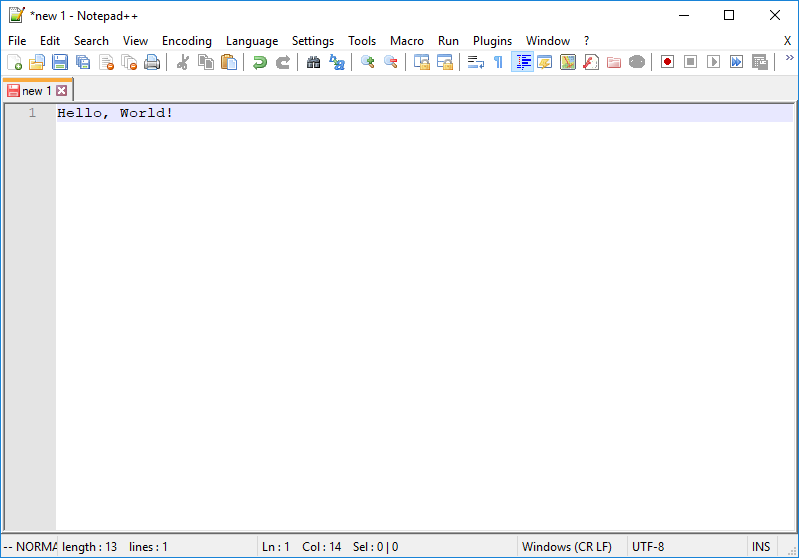


This will highlight all matches in the editor for you to see. Search is another great way to move your cursor. Ctl-b page up ("back")Ĭtl-u half a page up. $ move to the end of the lineġ23G jump to line number 123 (equivalent to :123)Ĭtl-f page down ("forward"). e move to the end of the word ("end")Ġ move to the beginning of the line. B move to the previous word ("Back")ī move to the beginning of the word ("beginning"). There are also several additional keyboard shortcuts to navigate within a file. The preferred mode in vim, however, is to use the j``k``h``l keys instead in COMMAND mode (these do not work in INSERT mode), which allows users to keep their fingers on the home row to move around the screen. :wq save and quit (or you can also use :x to do the same thing in one fewer keystroke) Navigating A FileĪrrow keys work in both modes to navigate as you would expect. If you have unsaved changes, you will be asked whether or not you'd like to save your changes before quitting. If you would like to save the file under a different name, specify a filename. If you don't specify a name, changes will be saved to the current file. :w myprogram.c save the current changes to a file. Again, if this file exists in your current directory it will open it, or it will create it if it does not already exist in your current directory. If vim is already open and you would like to edit a different file, use the :e filename command (e.g.

To open a file in vim (or create a new one if a file with this name does not exist): $ vim filename

Over time, you will likely spend more time in COMMAND mode than INSERT mode. To go back to COMMAND mode, you type the esc key.


 0 kommentar(er)
0 kommentar(er)
